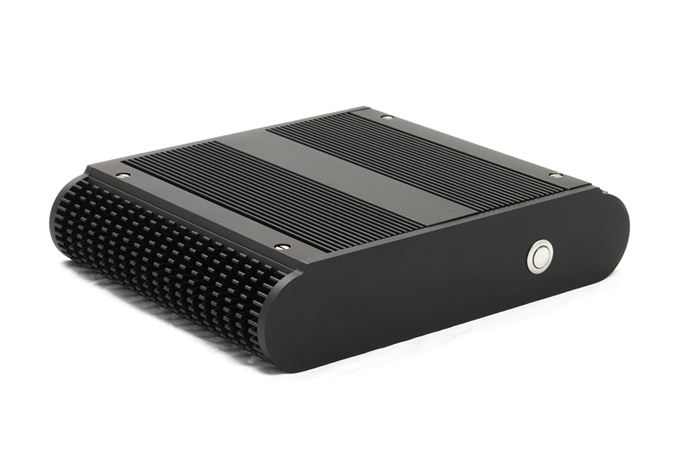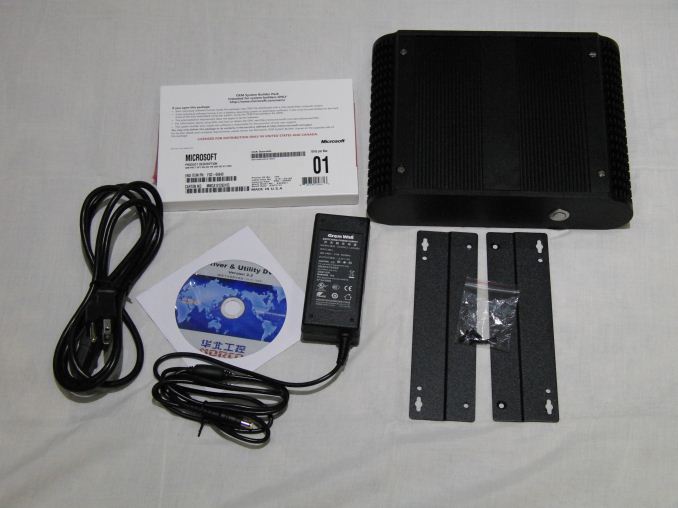HABEY BIS-6922 Fanless Ivy Bridge Industrial PC Review
by Ganesh T S on August 13, 2013 9:00 AM EST- Posted in
- Industrial PC
- Ivy Bridge
- Passive Cooling
- Habey

Introduction
Industrial PCs come with stringent requirements that are not satisfied by generic PCs. It is customary for builders to use active cooling in order to ensure that the components are in proper working order. Ventilation slots are also provided to keep airflow up. Chassis size is also not always a concern. However, these flexibilities are not always possible in industrial PCs. Operating environments for such systems usually call for passive cooling, dust resistance, rugged nature and minimal size (read, mini-ITX).
We reviewed the Aleutia Relia last year. Today, we are adding another fanless Ivy Bridge PC to the list, the Habey BIS-6922. The unit was launched late last year. Unlike units meant for the traditional PC market, embedded and industrial units are more focused on long term support and reliability rather than the latest and greatest that the silicon vendor has to offer. So, it is not surprising that Ivy Bridge-based industrial computers are seeing a strong presence in the market only now, after long-term validation by the manufacturers. The high level specifications of the BIS-6922 are available in the launch piece. In the table below, we have a quick overview of the configuration of the review unit sent by Habey.
| Habey BIS-6922 Industrial PC Specifications | |
| Processor |
Intel Ivy Bridge Core i7-3720QM (4 x 2.60 GHz (3.60 GHz Turbo), 22nm, 6MB L2, 45W) |
| Chipset | Intel QM77 |
| Memory | 2 x 4GB DDR3-1333 |
| Graphics |
Intel HD Graphics 4000 650 MHz / 1.25 GHz (Turbo) |
| Disk Drive(s) | 60 GB Intel SSD 330 |
| Networking | 2 x Gigabit Ethernet |
| Audio |
Microphone and headphone/speaker jacks Capable of 5.1/7.1 digital output with HD audio bitstreaming (HDMI) |
| Operating System |
Windows 7 Professional 64-bit (Retail unit has choice of OSes including barebones option) |
| Pricing (As configured) | ~$1500 (Varies depending on customization) |
| Full Specifications | BIS-6922 Specifications |
Our review unit came with the above internal configuration. In addition, we had the installation disk for a OEM copy of Windows 7 Professional x64, a 60 W DC power adapter, mounting plates with screws and a driver and utility CD. I wonder why companies bother with these optical discs when the product itself carries no optical drive. With Flash becoming more economical day-by-day, it might make better sense to bundle these in a USB stick instead of a CD or DVD.
The first section of the review will deal with the setup impressions and teardown of the system. We will take a close look at the thermal design. This is followed by results from our performance evaluation. The numbers will help up get an idea of the relative performance of the unit compared to other PCs with low power consumption. A separate section on thermal performance is also included.











63 Comments
View All Comments
coolhardware - Tuesday, August 13, 2013 - link
Crazy that they included a power supply not rated to meet max consumption, otherwise it seems like a nice industrial machine!DanNeely - Tuesday, August 13, 2013 - link
Assuming the 68W measured number was wall power it was probably in spec; at 88% efficiency 68W in provides 60W out and peak efficiencies are near 50% at full load it''ll fall off some. It the brick was a cheap low efficiency model it might only have been putting out 50-55W at that point.Samus - Tuesday, August 13, 2013 - link
I've used a 60w power brick on my A6-5400K system for nearly a year. Like all of them, it is a cheap Chinese brand, but it works. It does get hot, but I never pull 60w from a system where the CPU itself is rated at 65w alone. If you include motherboard overhead (chipset, memory) and SSD/optical drive (yes, it has both) the system should theoretically pull 90w.But it doesn't. I have a killowatt and it idles around 18w and never goes over 50w while playing back video. Even during Bluray playback it stays under 50w.
flyingpants1 - Tuesday, August 13, 2013 - link
Congratulations. They still should have shipped a larger brick.g00ey - Wednesday, August 14, 2013 - link
That's a ... very, very ... E-X-O-T-I-C word for 'power supply'. You know, I shit bricks sometimes, perhaps I should become their supplier...JSStewart - Thursday, August 15, 2013 - link
You should certainly do what you are best qualified for...flyingpants1 - Friday, August 16, 2013 - link
Maybe you already are. That would explain a lot.alex_alfanet - Friday, August 16, 2013 - link
What I found interesting is that the system was tested with a 45W TDP CPU but in the specs says that supports up to 35W TDP CPUs and in the Datasheet also says that Power Design Supports up to 35W CPUs. Requiring 10W less translates into a cooler systems and the 60 W power supply should be ok. I found that i7-3612QM and i7-3632QM are 35W TDP CPUs with Tj 105 °CDentons - Tuesday, August 13, 2013 - link
The external case reaching 155 deg F presents a definite safety issue. That's hot enough to burn skin.Something reaching that temperature in a work environment would very likely need big warning labels or more likely, be enclosed in a cage to protect workers from incidental contact.
Clearly, this is not for home users. It's hard to imagine a computing product with external case temp of 155 being approved for any consumer, home use.
DanNeely - Tuesday, August 13, 2013 - link
A lot of these are probably installed inside other machines; it getting that hot isn't any more of an issue in normal use than all the moving parts sealed away behind access panels.